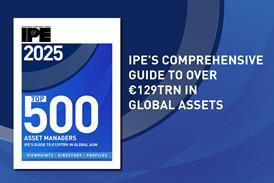The Trump trade war is costing Dutch pension funds dearly. According to estimates from consultancy Aon and Aegon Asset Management, the average pension scheme in the country has lost about 5-7 percentage points of funding ratio due to stocks crashing, as most funds have not hedged their equity risk.
The drop could affect some funds’ ability to switch to defined contribution (DC) plans without having to cut pensions.
According to Aon, funding ratios are down by five percentage points, while Aegon AM puts the loss at seven percentage points. The bulk of the losses can be attributed to stock market falls.
However, real estate price drops also cost over 1 percentage point, as did an increase in liabilities. The latter is due to a slight fall in interest rates of 0.1 percentage point on average across the curve.
The average Dutch pension fund invests about 44% in equities, according to Aon. The bank ING has warned of possible further falls in share prices.
“Under a stressed scenario (but not an unrealistic one) of a total 20% correction of the MSCI World Index and 20-year swap rates declining to 2%, the average funding ratio would fall to 105%,” said interest rate strategist Michiel Tukker in a report on the bank’s website.
In its report, ING estimated the funding ratio fall to date at four percentage points.
DC transition
A large number of funds will soon make the transition to a new DC arrangement. A sudden sharp fall in stock prices is exactly what funds had feared during this period. The handful of funds moving to DC in mid-2025 do not seem to be in immediate trouble.
The funds for librarians (135%) and for state-owned gambling firm Holland Casino (which is part of the pooled pension scheme Stap) both had ample buffers at the end of February. At Holland Casino, 122% of the original funding ratio of 130% was left at the end of 4 April, said Stap board chair Marga Schaap.
“The indexation bonus for members will be lower as a result. But for the time being, we are fully on course to move pensions to DC by 1 May,” Schaap added.
The professional funds for veterinarians (115%) and physiotherapists (117%) have less wriggle room, but both have sharply reduced their equity exposures. The veterinarians’ fund brought exposure down to 14%, while the physiotherapists’ scheme’s 23% allocation has been fully hedged through put options.
Tyres and wheels
The situation will be more tense for a number of funds that will move to DC in 2026, such as metals industry scheme PMT and the sector scheme for producers of tyres and wheels (Banden en Wielen). The funding levels of these funds were already below 110% before Trump’s ‘Liberation Day’.
The situation for Banden en Wielen seems most dire. The fund had a coverage ratio of 108% at the end of February, and just increased its allocation to equities at the end of last year, and its allocation to the return portfolio now stands at 65%, well above that of the average fund.
According to director Paul de Geus, however, the funding ratio fell by at most 3 percentage points this month. “Less than half of our investments in equities are in listed shares,” he explained.
Nevertheless, the funding ratio is now only slightly above the minimum desired level of 102%. If, by the end of 2025, it is lower than this 102%, “social partners will enter into consultations with each other and with the pension fund to see whether a possible postponement of the transition is in the interest of the participants”, the fund wrote in its transition plan.
Metals industry fund PMT, which had a coverage ratio of 109.9% at the end of February, is now also close to the minimum required inflation coverage ratio of 104.5%.
The fund has reached agreements with social partners “on several scenarios that take into account various factors, including stock market declines”, the fund has stated on its website.
PMT’s transition plan states that social partners may “in exceptional circumstances” decide to temporarily suspend the switch to a new DC arrangement.
Grocers’ fund
Levensmiddelen, the fund for grocers, and healthcare scheme PFZW are also scheduled to switch to DC in 2026. These are in slightly better shape, but also had funding ratios well below average at the end of February.
Levensmiddelen, which had a funding ratio of 112% at the end of January, had refrained from buying put options to protect its equity portfolio against price falls.
“That would have cost us too many funding ratio points,” said Daan Muusers, a trustee at the fund. “As a result, we felt the full hit of the equity market crash.”
Should the funding ratio fall further, it is not a foregone conclusion that the fund will postpone its transition.
“Our desired funding ratio is 104%, but we can still move to DC with a funding level of 95%. You can decide to defer in such a situation, but what will you get in return? Maybe interest rates will go down next year bringing you in an even worse position,” Muusers added.
PFZW, which had a 112% funding ratio at the end of February, wants to move to DC with a minimum coverage of 103.6%.
At a lower funding ratio, “social partners will enter into discussions to reach additional agreements”, the fund’s transition plan stated.
It is not clear to what extent PFZW has taken measures to protect its funding ratio. “Measures that we can take to protect the funding ratio, we apply,” a spokesperson told IPE via email, without giving further specifics.
This article was first published on Pensioen Pro, IPE’s Dutch sister publication.






























No comments yet